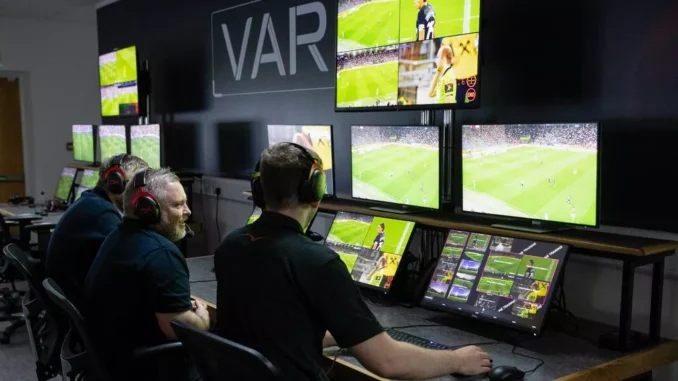
The moment came when the attacker unleashed a strike that rattled the underside of the crossbar and appeared to bounce close to—if not over—the goal line. Immediate appeals from the attacking side followed, but uncertainty reigned.
Despite their best efforts, Walsh and his assistants couldn’t say for certain whether the entire ball had crossed the line, as required under FIFA’s Laws of the Game for a goal to be awarded. With no clear visual confirmation, the officials decided not to award the goal, opting instead to let play continue.
VAR was swiftly consulted, but the video assistant referees found themselves equally unsure. Multiple replays from different angles failed to produce conclusive evidence that the whole of the ball had fully crossed the line. As a result, the original decision stood: no goal.
The incident quickly sparked debate, particularly over the absence of goal-line technology at the match—a tool that would have resolved the controversy within seconds. Critics questioned how, in the modern era of elite football, such decisive moments could still rely purely on human interpretation when technology capable of delivering definitive answers exists.
For the Belgian player and his teammates, the decision was a bitter pill to swallow, especially in a game where goals were at a premium. Meanwhile, the defensive side breathed a sigh of relief, knowing they had narrowly avoided conceding under contentious circumstances.
As scrutiny grows, this episode adds to the calls for uniform application of goal-line technology in all professional competitions to ensure fairness and remove ambiguity from such pivotal moments in the game.



Be the first to comment